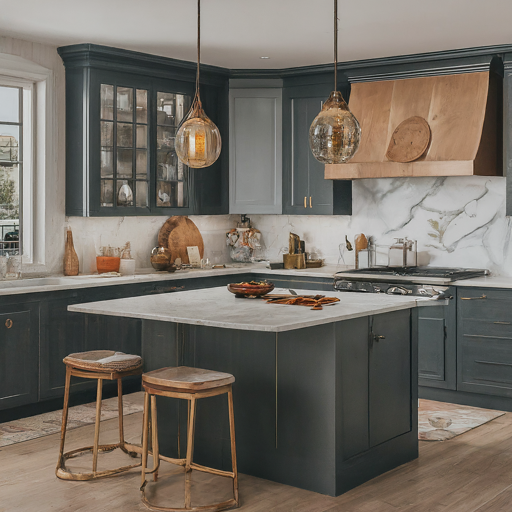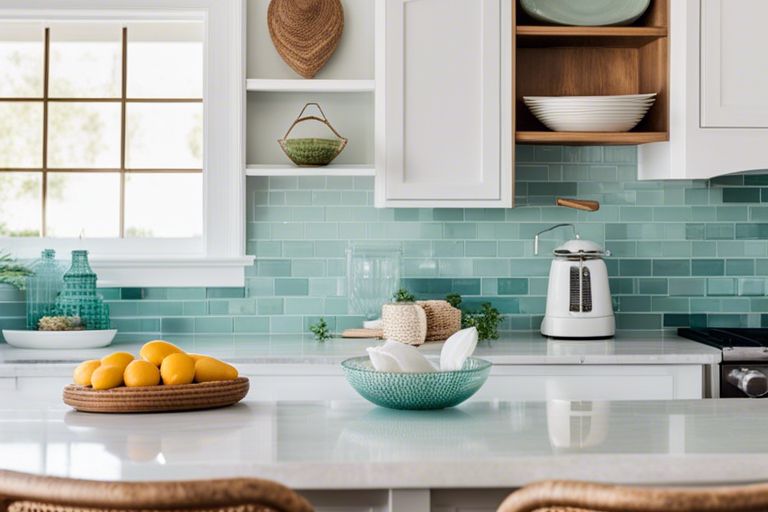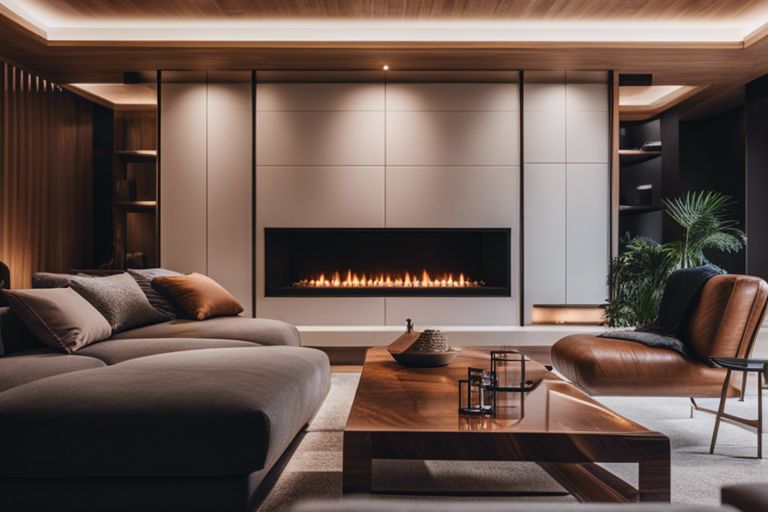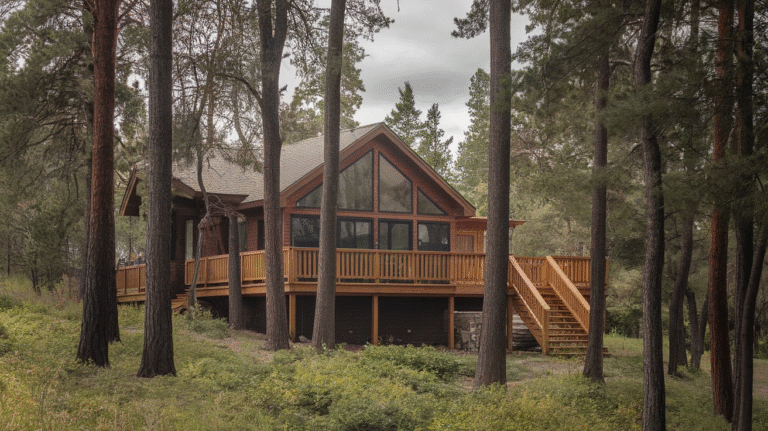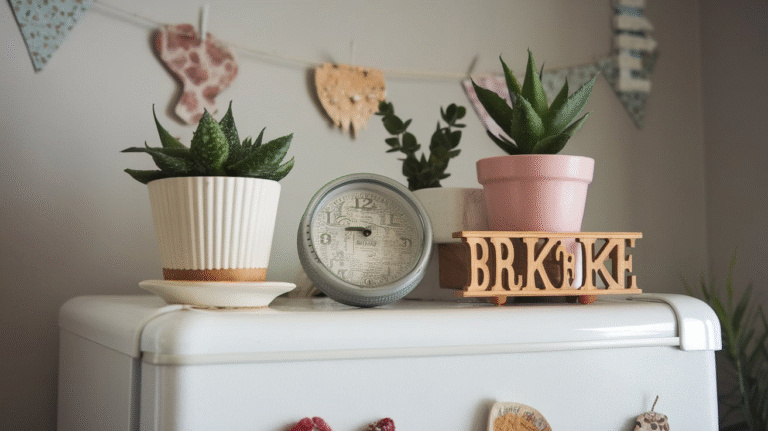19 Dining Table Centerpiece Ideas: Add Style to Your Dining Room

A dining table without a centerpiece is like a stage without a performer—it’s technically there, but it’s missing the magic.
If your dining room feels a little bland or flat, chances are your table is just waiting for a visual statement.
That’s where the perfect centerpiece comes in. It’s more than decor—it’s conversation, personality, and sometimes even function, all rolled into one stylish package.
Below, I’m walking you through 19 carefully selected centerpiece ideas to help you style your dining table like a design pro—whether you lean modern, rustic, minimal, or maximalist.
1. Fresh Flowers in a Statement Vase
Nothing beats fresh flowers when it comes to instant charm. A simple bouquet of peonies, tulips, or hydrangeas in a sculptural vase can bring any table to life.
I once used a hand-thrown ceramic vase filled with wildflowers from the local farmers’ market, and guests couldn’t stop commenting.
The scent, the color, the wild, effortless look—it brought a relaxed yet intentional vibe.
Pro Tip: Stick to seasonal blooms. They’re cheaper, last longer, and feel more authentic to the space.
Stat Worth Knowing: According to a study by Rutgers University, flowers increase happiness and emotional well-being, making them not just beautiful but beneficial.
2. Clustered Candlesticks for a Moody Glow
Candles bring ambience and timeless romance. Grouping tapered candlesticks of varying heights and materials—think brass, glass, or matte black—adds depth and sophistication.
They don’t even have to be lit. Even in daylight, they provide structure and style.
I like using odd numbers when clustering (three or five usually works), and always mix heights.
Just make sure the tallest ones don’t block eye contact across the table.
3. A Bowl of Seasonal Fruit
Who says food can’t be art? A wooden, ceramic, or glass bowl filled with seasonal fruit is both beautiful and edible. It’s a nod to classic still-life paintings with a practical twist.
During fall, I lean into red apples and pomegranates. In spring, lemons and oranges bring freshness and color.
Bonus: Guests feel invited to interact with the centerpiece. Nothing’s more welcoming than a bowl of juicy tangerines during dessert.
4. Succulents and Cacti for a Modern Edge
If flowers aren’t your thing (or you’re tired of replacing them), try succulents or mini cacti. They last forever and bring an architectural vibe to your dining setup.
Arrange them in low-profile pots—concrete, terra cotta, or modern ceramics—for a grounded, earthy feel. I’ve seen tiny echeverias steal the show on a sleek walnut table.
Insider Tip: Keep it low. A centerpiece should never block faces. Succulents are perfect because they stay stylish and subtle.
5. A Long Wooden Tray with Mixed Decor
A long rectangular wooden tray lets you layer a combination of small vases, candles, coasters, and even dried herbs.
Think of it as your decor charcuterie board. Mix materials—ceramic with glass, metal with linen. Add small pinecones in winter or seashells in summer.
Trays create boundaries, which is useful for keeping clutter off the table and making cleaning easier.
I use mine as a quick lift-away when I need to set the table for guests.
6. A Monochrome Moment
Choose one color—yes, just one—and run with it. A white-on-white or deep green centerpiece can feel editorial and deliberate.
Play with different textures to keep it from going flat.
A white marble bowl with white anemones, white taper candles, and a stack of white linen napkins sounds excessive—but on a rustic oak table, it’s unexpectedly elegant.
7. A Vintage Pitcher With Wildflowers
Sometimes the best pieces aren’t bought—they’re found. A vintage pitcher, chipped in all the right places, filled with wildflowers, has unmatched charm.
I once found an old floral-printed ceramic jug in a thrift shop for $5. Now, it’s the centerpiece of every spring brunch. Wild chamomile, baby’s breath, and lavender spill out like they’re telling a story.
This look screams cottagecore, if that’s your vibe.
8. Books as the Base
Yes, books. Stack two or three hardcover books—preferably with beautiful covers—and use them as a pedestal for your decor.
Top them with a small vase, a brass magnifying glass, or a decorative orb. This adds height, interest, and a touch of intellectual charm.
Use art books, vintage novels, or cookbooks. I’ve had guests open them mid-meal and spark conversation—who knew a centerpiece could be both stylish and educational?
9. Sculptural Objects
A single sculptural object—like an abstract stone piece, a carved wooden figure, or a handblown glass sculpture—can be a minimalist masterpiece.
The key is scale and placement. Too small, and it looks lost. Too big, and it becomes awkward.
This approach works especially well in modern or industrial spaces. It’s bold without being loud.
10. Seasonal Decor Swaps
Let your centerpiece evolve with the year. In fall, go with pumpkins and dried grasses.
In winter, lean into evergreens and pinecones. Spring calls for tulips, and summer loves citrus and coral.
Changing the centerpiece seasonally keeps your space feeling alive. Plus, it’s an easy way to refresh without redoing the whole room.
Stat Alert: 72% of homeowners who rotate decor seasonally report feeling “more satisfied” with their space year-round (Houzz, 2023).
11. Minimalist Bowl with Natural Elements
A single bowl filled with river rocks, moss, or driftwood can create a calming, spa-like vibe.
This look is earthy, minimal, and invites touch. It’s the design equivalent of a deep breath. Perfect for homes where you want a Zen-meets-dining mood.
Stick to one material or tone. For example, all white stones or all black pebbles. The simplicity is what makes it work.
12. Fresh Herbs in Pots
This is one of my favorite dual-purpose ideas: potted herbs like rosemary, thyme, or basil. They look lovely, smell incredible, and can be snipped straight into your meal.
Terracotta pots on a rustic or farmhouse table? Yes, please. Line three across a linen runner and enjoy the sensory experience.
Bonus: they purify the air and save you a trip to the kitchen mid-dinner.
13. Tiered Cake Stand with Decor
Dust off that cake stand you never use and turn it into a tiered decor moment.
You can stack candles, flowers, fruit, or holiday decor. It gives height variation and a sense of abundance.
I’ve used mine with tiny pumpkins and cinnamon sticks in October, then swapped in mini ornaments and cranberries for December.
It’s visual storytelling in layers.
14. Mirrored Tray with Metallic Accents
Mirrored trays reflect light and add glamour without being over the top.
Use one as a base for gold candle holders, a small vase, and a couple of cut-glass coasters. It works beautifully in glam, Art Deco, or modern dining rooms.
It catches the light during dinner and bounces reflections around the space like dancing jewels.
15. Linen Runner and Simple Ceramic Vessels
A neutral linen runner layered with matte ceramic vessels feels soft, warm, and timeless.
Play with negative space. You don’t need to fill the entire runner. Let the simplicity shine.
Choose three differently shaped ceramic pieces—maybe one holds water, another a few sprigs of greenery, and one stays empty.
The restraint is what makes it striking.
16. Floating Florals in Shallow Bowls
Take a shallow glass bowl, fill it with water, and float flower heads—roses, camellias, or gardenias work great.
It’s an old-school idea that feels new again when styled well. You can even add floating candles for nighttime drama.
This centerpiece creates a zen pond effect—soothing, fragrant, and mesmerizing.
17. Lanterns with Fairy Lights
Metal or wood lanterns with battery-powered fairy lights inside can create serious nighttime enchantment.
Even during the day, lanterns add structure and charm. At night, they become glowing orbs of ambiance.
Line a few in a row or group them in threes. Add moss or pinecones around the base for seasonal layering.
18. A Bowl of Decorative Spheres
Decorative spheres—made from rattan, stone, ceramic, or glass—are simple yet elegant. Fill a large bowl or sculptural tray with a mix of textures and tones.
This look is low-maintenance and lasts forever. It’s especially good in households with pets or kids, where fragile florals might be risky.
19. Mixed Heights and Shapes
One underrated trick: mix tall, short, wide, and narrow pieces. The human eye loves variety.
You can use a tall candlestick, a squat vase, and a round tray together. It creates a visual rhythm, almost like a song your eyes hum along to.
Keep your color palette tight—two to three tones max—to prevent chaos. And always play with placement before settling.
Final Thoughts: Let Your Centerpiece Tell a Story
A great dining table centerpiece does more than just look good. It invites conversation. It signals care. It creates atmosphere.
Whether you’re going full-glam with mirrored trays and gold accents or keeping it casual with wildflowers and vintage finds, make sure it feels like you.
Don’t worry about copying what you saw in a magazine or on Pinterest.
Your table, your rules.
And remember: you can always switch it up. In fact, you should. Your table is the heartbeat of your home—keep it beating with fresh, seasonal, and personal touches.

